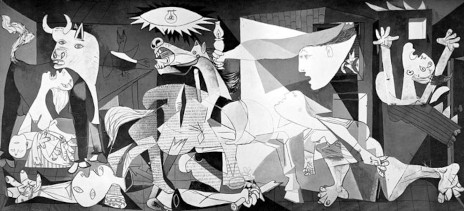April is National Poetry Month! Woo hoo!!
I came across this great article by Mary Haga on how to use poetry to help teach reading and build up reading decoding and fluency.
How to get started
Begin the school year by preparing a pocket folder for each child labeled "Poetry" and by preparing copies of two poems. I used a school theme. On the first day of school, begin this activity by reading a poem to the students. Then pass out a copy of the poem to each child and reread it to the students as they follow along. Then read the poem together chorally. Poetry lends itself to choral reading because of its rhythm. Follow the same procedure with the second poem.
On the second day, reread the poems chorally. Use the poems to do some word study activities. You might have the students search for rhyming words, or synonyms of words you give them.
On the third day, introduce another new poem by reading it to them, passing out the poem, reading it again, and then have the students read it chorally. Then read the old poems.
By the third day the children usually will have become fluent reading the old poems. So if the poem contains conversational parts (and try to pick many poems that have this feature) assign an individual child to read a character's part. The remainder of the class chorally reads any parts that would be considered narration. The children will enjoy the opportunity to read the individual parts. They have to be really alert and tracking to come in at the proper place.

Continue to follow this procedure throughout the school year:
- Introduce a new poem by reading it to the class. I tried to do this with lots of expression to give the students some idea of the possibilities of the poem. You may want to pick
poems that go with the subject matter you are studying or the season of the year.
- Pass out the poem and have the children follow along as you reread it to them.
- Read the poem chorally with you as the leader to keep the class together.
- If there is new vocabulary in the poem that is crucial to comprehension, discuss it the first day the poem is introduced.
- As poems become old poems, use them to work on word skills. These can be done orally, or as pencil and paper activities.
- Allow children to read individual character parts during the group choral reading.
- Read old poems as mini-Reader Theater scripts. This should be done after the children are very familiar with the poem. A child is assigned to each of the character/narrator parts or to a particular stanza of the poem. The group of children presents the poem at the front of the classroom.
- If you have too many poems to read them all at once, have the children take turns picking an old favorite to read. This can go on as long as you need. It is a great way to fill up those few minutes while waiting for PE, art, etc. when there isn't time to start another lesson.

How to choose the poems
- Start with humorous poems that rhyme. The humor will hook your students and the rhythm of the rhyme helps with the choral reading.
- Choosing poems that go with other subjects can be effective. You can often find poems in theme resource books or maybe even in your teacher's manual. There are some teacher resource books that have poems to use with content areas. That way you have permission to reproduce the poem for classroom use. For instance, when I did a spider unit in science in the fall, I used The Spider and the Fly, by Mary Howitt. This poem, an old classic, is in the Spiders book of the Creative Teaching Press Theme Series. It remained a favorite old poem and mini-Readers Theater all year long.
- Find poems that have conversational parts that can be turned into a mini-Readers Theater.
- Find poems that have definite parts where the children can be divided into groups. For example, using Shel Silverstein's The Meehoo with an Exactlywatt from A Light in the Attic, which is a take-off on a knock-knock joke, you could divide the class in half and have them chorally read the two parts.
- Always be looking for a good poem. You can never be sure where a really good one will turn up.
-


Using poems to practice skills
Relating skills to what is actually being read is always a good practice. Skills practiced in isolation on a worksheet do not always transfer to actual reading. The one caution here is that you not do this to excess. The main purpose of reading the poems is to create enthusiasm for reading. Always turning it into a skills drill can defeat that purpose.
Examine the poem to decide which skill to work on. If the poem has numerous contractions, then use that poem to work on contractions. If it has many short vowel words, use it to work on short vowels. You can make these oral activities or make up a worksheet for the children to complete as a written assignment.
Some of the skills I worked into these sessions:
- Find synonyms/antonyms. I would say a word and the children would search for a synonym/antonym. Sometimes I told them in which stanza to search.
- Work on alphabetical order using words from old poems.
- Use words from old poems in word sorts.
- Find the nouns, verbs, adjectives.
- Find the contractions and possessives. Since both have apostrophes, the students had to use the context to decide which it was.
- Paraphrase a short poem. You can see the rhythm of the poem disappear as it turns to prose. It really illustrates the difference.

Management tips
Everyone has to work out his/her own management system, but I will share with you what worked for me. Maybe you will find something that you can use.
- I had the children keep copies of all the poems in a pocket folder. They were told that we would be working with the poems the entire year and they should try to take care of the folder. I reinforced the binding of the folder with book tape to make it last longer.
- The children were not allowed to take the poetry folder home until the end of the school year. That way I was not constantly replacing poems and folders. When parents came to school, the poetry folder was always one of the things the children wanted to show their parents.
- I always ran a few extra copies of each poem for my file. There was always the student who lost a poem, chewed it up, or whatever else kids can think to do.
- I kept a clipboard with a class checklist for the poetry to keep a record of who got to choose the old poem to read, who got to read an individual part in a poem, and who had participated in the mini-Readers Theater. It solved the old argument of "you never pick me" because everyone had to have a turn before I started the list over.
- The checklist also let me keep track of the reluctant oral readers. There were surprisingly few of those by the end of the school year. Constantly rereading the poems made them confident enough to volunteer for the mini-Readers Theater or to read a character part during the choral reading.
- The rule was no illustrating during reading time. If the children wanted to color in the clip art or add their own art, they had to do it as a free time activity.
- I tried to add variety to the reading by dividing the children in different ways when we did choral reading. For example, everyone wearing jeans would read the first stanza. Those not wearing jeans would read the second stanza. Everyone would read the last stanza. Of course, you need to be alert. This would not have been a good choice on a day when all but one or two were wearing jeans.
- Reading the old poems is a good activity to leave in substitute plans.

Some favorite children's poets
I admit to having favorites among the children's poets; Jack Prelutsky, Shel Silverstein, Judith Viorst, and Eloise Greenfield immediately come to mind. Below are a few of their books.
- Jack Prelutsky
- The New Kid on the Block
- Something BIG Has Been Here
- A Pizza the Size of the Sun
- The Dragons Are Singing Tonight
- The Baby Uggs Are Hatching
- …and numerous more
- Shel Silverstein
- A Light in the Attic
- Where the Sidewalk Ends
- Falling Up
- Judith Viorst mostly writes fiction/nonfiction for children and adults
- If I Were In Charge of the World and Other Worries
- Eloise Greenfield writes fiction and poetry
- Nathaniel Talking

~All Poetry and Visuals Credit goes to the amazing Shel Silverstein












 Some common themes we find in literature are: honesty, acceptance, courage, perseverance, cooperation, compassion, kindness, responsibility, redemption, sacrifice, overcoming obstacles, and loyalty to name just a few.
Some common themes we find in literature are: honesty, acceptance, courage, perseverance, cooperation, compassion, kindness, responsibility, redemption, sacrifice, overcoming obstacles, and loyalty to name just a few. 




